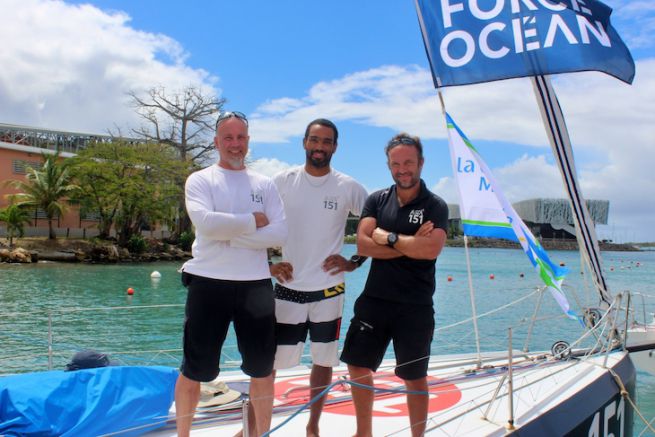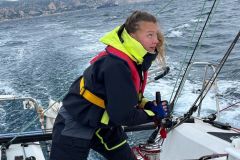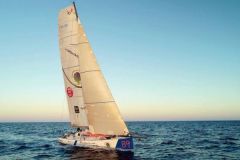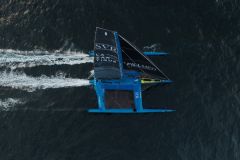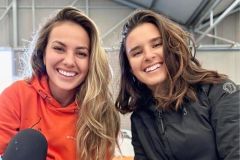Why participate in the Atlantic Challenge?
It's an opportunity to sail more, to prepare for the upcoming season, which will be run with a reduced crew. Overall, it will be a double season with a Transat Jacques Vabre objective at the end of the year (2019) for Aymeric and his co-skipper.
Why choose a return from the West Indies by sail and not by cargo?
Financially it's about the same thing, so let's do it while sailing to keep preparing the boat and training.
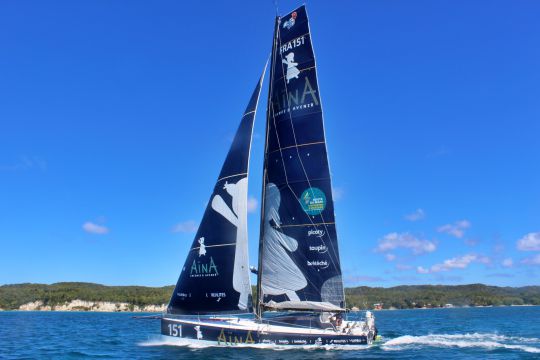
After the Route du Rhum, what was the programme of Aïna Enfance et Avenir?
On the return of the Rum, the boat remained on site, dry. We were able to participate in a regatta, the Caribbean 600. It's a very beautiful regatta that crosses the northern part of the Caribbean arc.
It allowed us to see what can break and what needs to be changed on the boat, to make it more reliable for the Atlantic Challenge. It is also the interest to do regattas before transiting.

How did you build your crew and why?
Aymeric will be with two teammates, myself, Rodrigue Cabaz and Eric Quesnel. I've been working on the boat for over a year and Eric knows it well too. So this is an opportunity to sail together. We know the boat and that's important when we're aiming for performance.
The more people there are, the more we overload the boat because we need more water, food, etc. That's why the three-way balance is a good compromise on a Class40. The optimal remains a duo but it is to the detriment of fatigue and speed of manoeuvre.
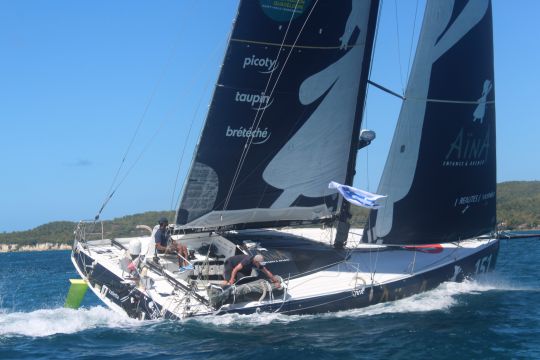
How is three-way navigation organized?
For the moment, we haven't planned anything in advance, but it's going to happen naturally. The last time the shifts were planned in advance and it didn't go as planned. We know each other, we know when we need to be on the bridge because there are a lot of manoeuvres and we will adapt in time.
What is the objective of this Atlantic Challenge?
When we start racing, our goal is to win. On this type of boat and race, you can do everything at the same time, because there is time to do it. We are all competitors and we don't just come to participate and say we're training. If it's going to be used to make the boat more reliable and to find systems to improve, we're going to push because we're not here to make up for it.
We are obviously favourites and we want to honour this status. You come to win if you can win.

Two days before departure, what is your state of mind?
There are always things to do but the boat is ready, so are the guys.
How does the crossing look like?
We looked at the weather files with a crossing estimate from about 8 days ½ to 9 days ½. What we don't know yet is the final position around the 1st ERYD - Emanuele Rossi Yacht Design - is an Italian naval architecture firm that also builds its own daysailers under the brand name ERYD Yachts. In 2006, the Eryd 30 - a very elegant 9m sailboat with sleek lines - was launched before being joined in 2010 by the Eryd Open - an innovative 8.70m design. april and the Azores high. If it's further north than the Azores, we'll have to finish upwind. If it's on the archipelago, we won't have any wind to finish the course. It will be laborious, with two or three days to get there instead of one day. If it's south, with downwind conditions until the finish, it'll be very fast.
This is an important point that will define the trajectory. We have two large files, the American system - GFS - and the European system - CEP. Both are in agreement until March 28. There are still three days of uncertainty and that is huge. We'll know more soon.
Photo credits: Bateaux.com
